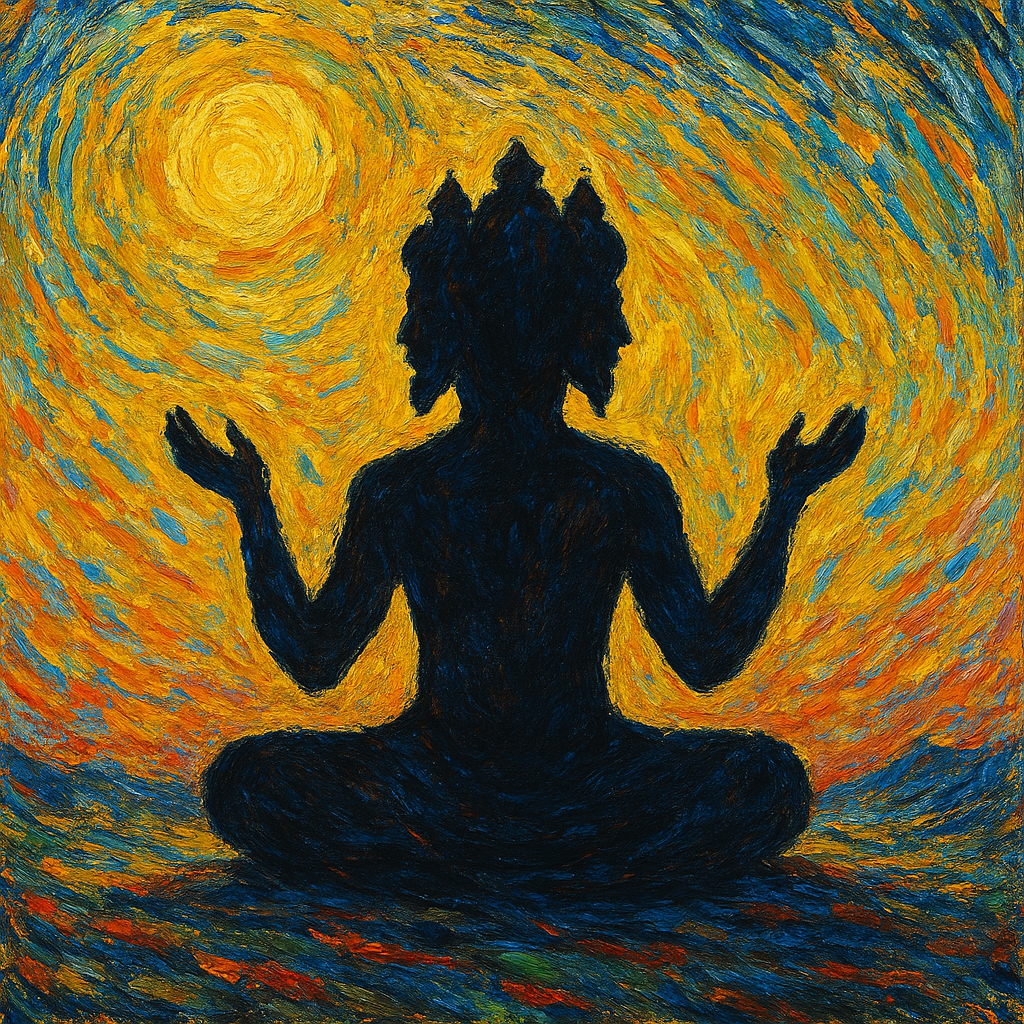Lord Brahma: Understanding the Marginalized Creator
Lord Brahma, the cosmic creator, faced immense stigma—divine curses, moral scrutiny, and near-exclusion from worship. Yet, he persisted, embracing his role despite rejection. His journey teaches us resilience, detachment, and the enduring value of purpose beyond public perception.

Introduction
Lord Brahma, the Creator in Hindu cosmology, is one of the Trimurti—the trinity of Brahma, Vishnu, and Shiva—responsible for the cycle of creation, preservation, and destruction. Despite his unparalleled role in shaping existence, Brahma has often been a marginalized figure in Hindu worship and mythology. Unlike Vishnu and Shiva, he has few temples dedicated to him, and his stories are marked by conflicts, misunderstandings, and moral complexities that have contributed to his diminished reverence over time.
The stigma attached to Brahma arises from multiple sources: his controversial actions, his perceived moral lapses, and the subsequent divine decrees that relegated him to a lower status in popular devotion. Examining these aspects offers a profound reflection on how stigma functions—not just in mythology, but in human societies as well. By understanding the burdens Brahma bore and how he handled them, we can draw valuable lessons about resilience, redemption, and the weight of societal perception.
The Various Stigmas Faced by Brahma
1. The Curse That Marginalized Him
In many Hindu traditions, Brahma is said to have been cursed by Shiva, leading to his near-complete exclusion from worship. This story, told in different Puranas, centers on an argument between the two gods about supremacy. Shiva, angered by Brahma’s arrogance, decreed that he would no longer be widely worshipped. This divine punishment was a major blow to Brahma’s relevance in popular Hindu practice.
2. The Controversy of Creation and Desire
One of the most significant sources of stigma surrounding Brahma is the narrative involving his own creation. According to myth, he created Shatarupa, a female deity of immense beauty, but became captivated by her. As she moved in different directions to escape his gaze, he sprouted additional heads to continue looking at her. This act, interpreted in many traditions as morally problematic, led to his criticism and, in some versions, even a punishment from Shiva, who severed one of his five heads.
3. The Forgotten God of Temples
Unlike Vishnu and Shiva, who have countless temples, Brahma is worshipped in only a handful of places—most notably, the Brahma temple in Pushkar, Rajasthan. The rarity of his worship further contributes to his identity as an outcast among the major deities. The reason for this is attributed to multiple factors, including the aforementioned curses and his declining relevance in later Hindu traditions.
4. Challenges in Hindu Cosmology
Unlike Vishnu and Shiva, who actively intervene in cosmic and earthly affairs, Brahma’s role is largely confined to creation. This lack of an active presence in human history and divine play (lila) has led to his diminished stature. Mythology often portrays him as a distant, sometimes flawed creator rather than an accessible deity of devotion.
How Brahma Handled These Stigmas
- Acceptance of His Fate – Instead of trying to overturn his divine punishment, Brahma continued to fulfill his cosmic duty as a creator, showing that purpose transcends popularity.
- Detachment from Worship – While his worship declined, he did not rebel or seek vengeance. This reflects a philosophy of detachment—a key Hindu principle.
- Persistence in Creation – Despite his marginalization, Brahma’s role as the creator remains intact. He never abandoned his duty, embodying resilience in the face of rejection.
- Symbolic Presence in Scriptures – Even if his active worship diminished, Brahma’s presence in scripture remains essential. He is acknowledged as the progenitor of knowledge, Vedas, and civilization.
- Reinvention through Symbolism – While literal worship faded, his legacy persists through his association with Saraswati (goddess of wisdom) and as a metaphor for the transient nature of creation.
Lessons We Can Learn
“Stigma does not define worth.”
Brahma’s story offers valuable insights into how individuals can navigate stigma and rejection:
- Stigma Does Not Define Worth – Brahma’s contributions to the cosmic order remain significant despite his exclusion from mainstream worship. Similarly, societal rejection does not erase a person’s value.
- Detachment Leads to Strength – Instead of clinging to his past status, Brahma embraced his role without resentment. Letting go of what we cannot control is often the path to peace.
- Resilience Matters More Than Recognition – Even when his reputation suffered, Brahma did not stop creating. In life, perseverance matters more than public approval.
- Actions Have Consequences – The narratives surrounding Brahma remind us that actions, especially those seen as ethically questionable, can have long-lasting repercussions.
- Transformation Through Perspective – While Brahma may not be a central figure in worship, he remains an integral part of Hindu philosophy. Similarly, shifting our perspective can help us find meaning in adversity.
Conclusion
Brahma’s journey through divine rejection and moral scrutiny mirrors real-world experiences of stigma. His story, often overshadowed by more popular deities, provides a compelling reflection on resilience, responsibility, and the complexities of judgment. While his active worship may have waned, his role as the cosmic creator remains undisputed, reminding us that significance is not always measured by popularity.
In a world that often assigns labels based on past actions or societal perception, Brahma’s tale encourages us to look beyond external validation and focus on purpose and persistence. His existence in Hindu cosmology is a testament to the idea that while reputations may change, one’s true essence and contributions endure beyond transient judgments.
